Futures Erase Losses As Markets Brace For Earnings Avalanche
US equity futures are little changed, reversing earlier losses as much as 0.5%, as global markets are broadly in the green amid a burst of positive sentiment, which even pushed JPM's recently bearish trading desk to turn tactically bullish this morning (more in a subsequent post). As of 8:00am ET, S&P and Nasdaq futures are down 0.1%, but well off session lows. Nvidia shares fell 1% in premarket after the Wall Street Journal reported China’s Huawei Technologies is getting ready to test a new and powerful artificial intelligence processor that the company hopes can replace some products made by Nvidia; other Mag7 names are mixed with Cyclicals/Semis under pressure and Defensives catching a bid. Europe's Estoxx advanced 0.5% over early London session with gains led by info tech and consumer staples; Asian stocks were also broadly higher with Japan erasing all post-Liberation day losses. US equities are focused this week on the tech sector, with Microsoft, Apple, Meta and Amazon all reporting earnings. The week also includes the April US jobs report, due Friday. Bond yields are higher as the curve bear steepens and the USD starts the session stronger. This is a data-heavy week but today’s focus is on regional Fed activity but the key’s this week are NFP, JOLTS, ISM-Mfg, and 25Q1 metrics.
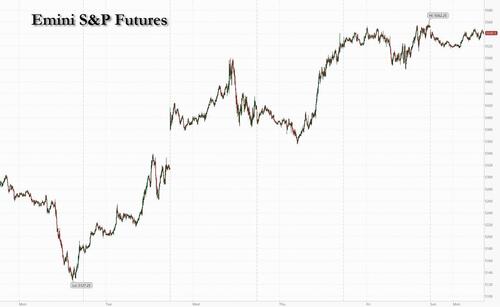
In premarket trading, Nvidia shares slip after the WSJ reported that Huawei is getting ready to test an artificial intelligence processor that the Chinese tech giant hopes can replace some Nvidia products; others Mag7 stocks are Alphabet 0.06%, Meta Platforms +1%, Amazon +0.1%, Tesla +0.8%, Nvidia -1.5%, Microsoft -0.2%, Apple 0.6%. Boeing rises 1.5% as Airbus SE agreed to take over some assets and sites from Spirit AeroSystems, clearing the way for Spirit to be acquired by Boeing. Also, Bernstein upgraded Boeing to outperform, noting that the aircraft maker is now “making the progress it needed for the growth trajectory.” Eli Lilly slips 1.6% after HSBC double downgraded the stock to reduce — a sell-equivalent rating — from buy, saying the drugmaker’s risk-reward “is not attractive.” Here are some other notable premarket movers:
- CG Oncology (CGON) soars 40% after presenting data on cretostimogene grenadenorepvec monotherapy data at the American Urological Association annual meeting.
- Jack in the Box (JACK) rises 4% after Stifel upgrades to buy, saying new CEO Lance Tucker “has created a viable plan to strengthen the balance sheet.”
- Peloton Interactive (PTON) gains 6% after Truist Securities upgraded the fitness company to buy, saying the stock is finally nearing a point where the company’s improving fundamentals should support a recovery in shares.
- Revolution Medicines (RVMD) climbs 5% after presenting initial data from a Zoldonrasib study in patients with non-small cell lung cancer.
US futures posted modest moves as investors awaited reports from American companies worth $20 trillion, including four mega tech names AAPL, AMZN, MSFT and META, and watched for progress in US trade talks with Asian partners. Wild gyrations sparked by Trump’s April 2 tariff announcements have eased somewhat, but investors will be scrutinizing this week’s key company reports for the earnings impact of US trade policies. Fresh readings on the state of the American economy may support hopes of earlier-than-expected Federal Reserve interest-rate cuts.
Four of the Mag 7, Microsoft, Apple, Meta and Amazon, are due to report earnings this week. Analysts expect the group to deliver an average of 15% profit growth in 2025, a forecast that’s barely budged since the start of March despite the flareup in trade tensions. In terms of market capitalization, it’s the busiest week of the year for earnings, with S&P 500-listed companies worth $20 trillion reporting.
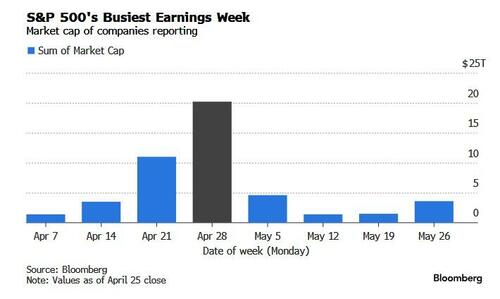
Investors are also watching for any signs of progress in US trade negotiations after Trump suggested another delay to his higher tariffs was unlikely. Asian economies, facing some of the highest US “reciprocal” tariffs, are leading the way over their western counterparts in talks with the administration.
“Ultimately, it seems that we’re moving towards a place where these policies start to make a little more sense,” Themistoklis Fiotakis, global head of FX strategy at Barclays Plc, told Bloomberg TV. “If this starts shaping up in a place where markets can understand it, can quantify it, then I think that things are going to normalize.”
To help manage the next steps, the Trump team has drafted a framework to handle negotiations with about 18 countries, including a template that lays out common areas of concern to guide the discussions. US Treasury Secretary Scott Bessent said the administration is working on bilateral trade deals with 17 key partners, not including China. Bessent reiterated the administration’s argument that Beijing will be forced to the negotiating table because China can’t sustain Trump’s latest tariff level of 145% on Chinese goods. Its standoff with China will likewise limit the potential benefits the US can reap from deals with Asian trading partners, according to Phoenix Kalen, global head of emerging markets research at Societe Generale SA.
“Already there has been a lot of investor sentiment and positioning for some deals to be done, especially with Japan, especially with South Korea,” Kalen told Bloomberg TV. “But the scope is going to be relatively limited and hampered. The concern especially for Asian trade partners around how China will respond to the terms will limit the extent to which they can agree to certain terms with the Trump administration.”
Meanwhile, Friday’s US non-farm payrolls figures will also turn attention to the health of the American economy. “In general I think this week’s data won’t be too bad for the economy because it really precedes the announcement of tariffs,” Kathy Jones, chief fixed income strategist at Charles Schwab & Co., told Bloomberg TV. “The inflation numbers shouldn’t be too bad. But I’ll really be watching the ISM numbers at the end of the week and of course, the jobs data where we could see some softness.”
The S&P 500’s recovery month-to-date from a 14% drop to -1.5% as of Friday’s close is one of the best rebounds since 1950. Still, the bounce has been too narrow to instill much confidence in a sustainable longer-term rally. Traders may stay cautious as gains have been largely headline and short-covering driven. Volatility is abating but remains elevated. It’s also coming up to the 100-day mark for Trump’s presidency.
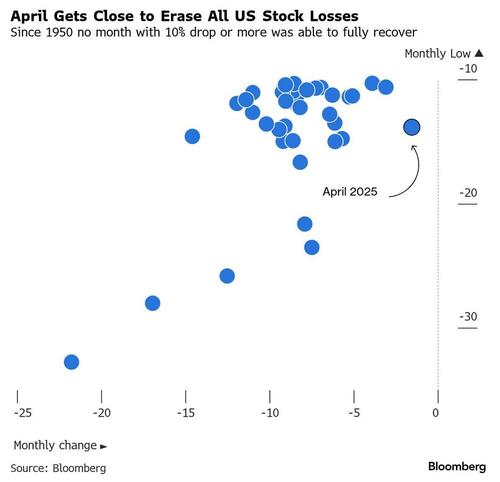
In Europe, the Stoxx 600 is set to extend its winning streak to a fifth session as it climbs 0.7%, boosted by M&A news out of Italy as Mediobanca made a €6.3 billion ($7.1 billion) offer for the wealth management arm of Italian insurer Assicurazioni Generali SpA. Food & beverage, travel & leisure and bank stocks are leading gains while real estate and industrials lag. Here are some of the biggest movers on Monday:
- Deliveroo stock soars as much as 18% to 173p after the food-delivery firm said that DoorDash has made a cash takeover proposal at 180p a share, and it would be “minded to recommend such an offer” to shareholders.
- Traton shares rise as much as 5.5% after the German truckmaker posted first-quarter results, with analysts welcoming a strong order intake.
- Interpump shares rise as much as 4.1% in Milan trading after BNP Paribas Exane analysts upgraded the Italian hydraulics and pumps manufacturer, saying it is “an overlooked M&A story with positive risk/reward.”
- ITV shares drop as much as 3.8% after a report that France’s Banijay Group is working on plans for a takeover offer for the entire broadcaster or its studio arm. Analysts note reports of interested bidders are building, but a deal isn’t a certainty.
- Fraport drops as much as 4.5% after Jefferies downgrades the airport services provider to underperform from hold, saying it’s overexposed to slowing transatlantic and business traffic.
- Nagarro shares fall as much as 16%, to a record low, after the German IT services firm postponed the publication of its full-year results.
- BoneSupport falls as much as much as 6.6% after the company announced its CEO Emil Billback is stepping down after more than seven years in the role.
- Valneva shares drop as much as 20% after French regulators decided to suspend the use of its chikungunya vaccine Ixchiq for people aged 65 years and older.
Earlier in the session, Asian shares also rose as focus shifted to a slew of major earnings from the region, while signs that trade tensions may have peaked, at least for now, helped sentiment. The MSCI Asia Pacific Index rose as much as 0.8%, adding to last week’s 2.2% gain. Japanese benchmarks outperformed following a report on Toyota Motor Corp. chairman’s proposal to buy out Toyota Industries. Indian shares resumed their climb amid foreign inflows, while Chinese stocks were range-bound as officials reiterated their plan to strengthen support for employment and the economy. The flood of tariff-related headlines has slowed somewhat, and investors are turning their attention to earnings to gauge how Asian firms are prepared to tackle higher levies. The region is facing its busiest earnings week this season, with China’s biggest banks including Industrial & Commercial Bank of China Ltd. and Bank of China Ltd. set to release results.
“Broadly, we’re seeing some relief positioning as there is some refocusing on fundamentals, which I would say is tariff fatigue,” said Billy Leung, senior investment strategist at Global X ETFs in Australia. On China’s earnings, markets want to see more commentary from corporates on domestic confidence, he added.
In rates, treasuries were cheaper across the curve, with futures extending a drop into the early US session as investors digest news around US trade talks with Asian partners. US yields were cheaper by 2bp to 5bp across the curve, with intermediates underperforming slightly, flattening 5s30s spread by 2bp on the day. US 10-year yields traded around 4.27%, down 4 bps from Friday's close; European bonds also decline with bunds lagging by 1bp and gilts outperforming 1bp. Next Treasury coupon auction is scheduled for May 5.
In FX, the Bloomberg Dollar Spot Index is flat; New Zealand dollar lags G-10 peers and the pound leads gains, rising 0.3% against the greenback.
In commodities, spot gold falls $42 to around $3,278/oz. Oil prices are steady with WTI just below $63 a barrel.
In crypto, bitcoin rose 1.1% to $95,344.86; ether rose 0.9% to $1,819.53.
Looking at the US economic calendar, it's quiet - we only have the April Dallas Fed manufacturing activity at 10:30am. Fed officials are quiet due to blackout period. This week also includes JOLTS, consumer confidence, PCE, GDP, ISM manufacturing and April payrolls. Fed’s external communications blackout ahead of the May FOMC meeting started Saturday.
Market Snapshot
- S&P 500 mini -0.2%
- Nasdaq 100 mini -0.2%
- Russell 2000 mini -0.3%
- Stoxx Europe 600 +0.6%
- DAX +0.7%
- CAC 40 +0.8%
- 10-year Treasury yield +3 basis points at 4.26%
- VIX +0.7 points at 25.51
- Bloomberg Dollar Index little changed at 1226.26
- Euro -0.2% at $1.1347
- WTI crude -0.2% at $62.92/barrel
Top Overnight News
- Trump posted on Truth that “When Tariffs cut in, many people’s Income Taxes will be substantially reduced, maybe even completely eliminated. Focus will be on people making less than $200,000 a year. Also, massive numbers of jobs are already being created, with new plants and factories currently being built or planned. It will be a BONANZA FOR AMERICA!!! THE EXTERNAL REVENUE SERVICE IS HAPPENING!!!”. Trump also posted that “…this is a crucial week to work on “THE ONE, BIG, BEAUTIFUL BILL,” which will contain Massive Tax Cuts, Strong Border Security Measures, Major Military Advancements, Dramatic Deregulation, Powerful Spending Reforms, and more!”
- Trump will meet with House Speaker Johnson at 2pm ET and will be signing executive orders focused on restoring law and order and securing the homeland at 5pm ET on Monday.
- Mark Carney is seeking a fourth Liberal win in Canada in today’s election. Pierre Poilievre’s Conservatives chipped away at his lead in the final days of the campaign, but surveys still point to a probable Liberal victory. BBG
- Ukraine’s Volodymyr Zelenskiy said he’s hopeful for a lasting peace after talking with Trump, who questioned whether Vladimir Putin genuinely wants to end the war, and floated further sanctions. BBG
- Huawei is developing an AI processor that it hopes may replace some Nvidia products, the WSJ reported. BBG
- Trump’s trade war with Beijing is starting to affect the wider US economy as container port operators and air freight managers report sharp declines in goods transported from China. FT
- The drastic reduction in goods from China hasn’t been felt by many Americans yet, but that’s about to change. By the middle of May, thousands of companies — big and small — will be needing to replenish inventories. Giant retailers such as Walmart Inc. and Target Corp. told Trump in a meeting last week that shoppers are likely to see empty shelves and higher prices. BBG
- China’s top economic officials said the country could do without American farm and energy imports as they vowed to achieve a 5% GDP growth target for the year despite the trade war with the US. FT
- China has rejected US President Donald Trump’s claims that he received a phone call from Chinese leader Xi Jinping. The Trump administration has repeatedly asserted over the past week that the US president had spoken by phone with Xi and trade talks took place. SCMP
- A senior South Korean government official ruled out on Monday that Seoul would agree to a trade package with Washington by the time the country holds a presidential election on June 3, and flagged challenges to reaching a deal even before early July. RTRS
Tariffs/Trade
- Chinese President Xi and US President Trump have not had a call recently, according to China's Foreign Ministry; says the US and China have not conducted negotiations and consultations on tariffs.
- USTR’s office was reported on Friday to have prepared a framework for staggered reciprocal trade negotiations aimed at streamlining talks with 18 partners on a rolling basis over the next 2 months until the US’s July 8th deadline, according to WSJ.
- US Treasury Secretary Bessent said he had interaction with his Chinese counterpart in Washington last week and thinks the Chinese will see the tariff level as unsustainable and he also thinks there is a path to an agreement with China on tariffs, according to ABC News. It was separately reported that Bessent had met with Japanese Finance Minister Kato on Thursday and held productive discussions across a broad range of bilateral issues including reciprocal trade, while he was said to be encouraged by discussions with South Korean officials that focused on an ‘expanded equilibrium’ which encourages rather than restricts trade.
- US Agriculture Secretary said the US is holding daily conversations with China over tariffs.
- China has reportedly quietly exempted some US-made products from tariffs with Beijing said to have been canvassing companies and waiving duties on US goods in sectors where there is a lack of alternatives, according to WSJ.
- Shein is said to have raised US prices on some items by as much as 377% ahead of tariff increases, according to Bloomberg.
- Fox’s Gasparino posted on X that the Trump Administration would like to roll out trade deals this week, at least the outlines that have been agreed upon, citing sources close to the matter.” However, he also noted there are a lot of moving targets that could delay matters, while the deals on deck include India, Japan and maybe South Korea and Australia, although the White House spokesperson didn’t respond to a request for comment.
- Pershing Square CEO Ackman posted on X that the US could choose to unilaterally pause China tariffs to better facilitate US companies transitioning supply chains out of China, while he believes the US and China are incentivised to take tariffs down to more reasonable levels of 10%-20% as quickly as possible.
- South Korean's Vice Industry Minister says no chance of reaching an agreement on a trade package with the US before the June 3rd snap elections.
A more detailed look at global markets courtesy of Newsquawk
APAC stocks were mixed amid a lack of major catalysts from over the weekend and with a very quiet calendar to start a busy week of earnings results and key data releases including the latest US NFP report. ASX 200 was led higher by outperformance in tech, healthcare and energy, while miners lagged after mixed production updates. Nikkei 225 advanced at the open as participants digested earnings releases and M&A news in which Toyota Motor's chairman and founding family made a takeover proposal for Toyota Industries. However, the index has since pulled back from today's peak after failing to sustain a brief return above the 36,000 level. Hang Seng and Shanghai Comp lagged amid some disappointment from Beijing's press conference on policies and measures for stabilising employment, ensuring stable growth and promoting high-quality development which was conducted by the deputy heads of government agencies and the PBoC and lacked any major concrete policy measures. Japan's TOPIX Index erases all losses since the April 2nd US tariff announcement.
Top Asian News
- China held a press conference about policies and measures on stabilising employment, ensuring stable growth and promoting high-quality development which was attended by deputy heads of Chinese government departments and the PBoC.
- PBoC Deputy Governor said China will cut RRR and interest rates at an appropriate time, as well as guide financial institutions to guarantee financing demand for foreign trade firms. Furthermore, the PBoC is studying plans to enrich policy kits and will roll out new policies when needed, while it will boost financing support for private firms, allowing private firms to issue more debts.
- MOFCOM Vice Minister Sheng said China will further improve the second-hand car markets and will smooth consumption of used car market this year, while China will push the expansion of healthcare and childcare services and actively expand imports.
- China NDRC vice chief said will closely monitor domestic and external changes and improve policy toolkits, while they will unveil new policies based on changes in the economic situation and some new policies will be rolled out in Q2.
- China’s Finance Minister said China will adopt more proactive macroeconomic policies to promote the realisation of the growth target and that China is willing to further open up its super large markets to the world to achieve mutual benefits.
- China’s Cabinet passed the draft law of China’s medical security and will submit it to the NPC Standing Committee for deliberation, while it also approved the Sanmen nuclear power plant in Zhejiang province.
- China issued a notice on further improving tax refund policies for foreign tourists to boost inbound consumption and will promote the expansion of tax refund stores at shopping centres, scenic spots, airports and hotels.
- Chinese President Xi said China will use various policies to support development, while he urged for the healthy and orderly development of AI.
- China’s top market regulator said regarding a media report of separating the Panama Port from the CK Hutchison (1 HK) deal, that they are paying close attention to the transaction and will review it in accordance with the law. Furthermore, the regulator said parties to the transaction must not use any means to avoid a review.
- TikTok owner ByteDance plans to enter online shopping in Japan as it seeks to expand outside of the US.
- Huawei approached some Chinese tech companies about testing the technical feasibility of the new chip called Ascend 910D, according to WSJ.
- Rumours were circulating in social media that DeepSeek’s R2 AI model is nearing release which is set to feature double the parameters of R1.
- Following the Politburo statement on Friday, which flagged further interest rate cuts, a Reuters source close to the PBoC said it was in no rush to trim rates as the impact of tariffs is still unclear.
- BoJ Quarterly Schedule of Outright Purchases of JGBs: pace maintained for May.
European bourses (STOXX 600 +0.4%) opened modestly firmer across the board, and have traded rangebound throughout the morning thus far given limited fresh macro drivers. European sectors hold a strong positive bias, but with the breadth of the market fairly narrow. Food Beverage & Tobacco takes the top spot, joined closely by Autos. Real Estate sits at the foot of the pile, given the relatively higher yield environment today.
Top European News
- BoE Governor Bailey and US Treasury Secretary Bessent held discussions on financial markets and the regulatory environment.
- ECB’s Centeno said uncertainty is dominating economic analysis which was largely being caused by US trade policy.
- ECB’s Kazaks urged cautious steps and said the ECB should only lower interest rates into accommodative territory if the growth outlook continues to deteriorate much further, according to Bloomberg.
- ECB's Knot said the ECB June meeting is going to be really complicated, according to European press cited by Bloomberg.
- ECB’s Simkus said the ECB may have to cut rates a couple of more times as US tariffs weigh on economic growth and as inflation continues to slow, according to Bloomberg.
- ECB's Villeroy says he "does note see any extra inflation for Europe; says we still have margin for rate cuts in Europe".
- ECB policymakers reportedly are becoming increasingly confident about a rate cut in June although there is little to no appetite for a big move, according to six sources cited by Reuters. It was also reported that the central bank established a task force to simplify banking regulation.
- SNB adjusts the remuneration of sight deposits; lowers the threshold factor to 18 (prev. 20), effective June 1st.
FX
- A choppy session for the Dollar, but ultimately flat on spot month end in what has been the quiet before the storm in terms of news flow thus far, with the rest of the week packed with risk events including the first look at Q1 USD GDP and the US labour market report. There was minimal major and new tariff news, but US consumers may soon feel the impact (e.g. Shein raising prices by up to 377%, logistics slowdown in air freight and imports). DXY currently resides in a relatively tight 99.46-99.84 range.
- EUR is subdued, albeit marginally, against the backdrop of a string of relatively dovish ECB rhetoric, whereby policymakers are becoming increasingly confident about a rate cut in June. EUR/USD resides in a 1.1330-80 range.
- Flat trade for the JPY amidst a lack of major updates over the weekend. US Treasury Secretary Bessent met with Japanese Finance Minister Kato on Thursday and held productive discussions across a broad range of bilateral issues including reciprocal trade. USD/JPY resides in a 143.29-143.90 range.
- GBP is slightly firmer in a quiet session thus far to start the week. In terms of UK trade headlines, UK Chancellor Reeves said she met with US Treasury Secretary Bessent, says the goal is reaching an agreement that is in both their national interests. GBP/USD trades in a 1.3280-1.3346 range.
- Antipodeans are lower intraday amid the cautious risk tone alongside ongoing tariff uncertainty between the world's two largest economies, whilst domestic updates have been light. AUD/USD dipped under Friday's trough in a 0.6369-0.6406 intraday range.
Fixed Income
- USTs are contained, but do hold a downward bias. Newsflow on the tariff/trade front included indications of a potential path to a US-China agreement, however, specifics have been light with major catalysts ex-geopols a touch light. Amidst this, USTs find themselves in a thin 111-14+ to 111-22+ band. Ahead, the docket is focussed on the Dallas Fed Manufacturing Business Index before the Treasury Financing Estimates ahead of Wednesday’s Quarterly Refunding.
- Bunds are in-fitting with USTs and as such are also in a relatively modest 131.32 to 131.76 band. Developments for the bloc, ex-earnings, have been light. The slight underperformance seen in EGBs vs USTs/Gilts is likely a function of some concession into upcoming EZ supply where over EUR 5bln is expected to be sold across three lines. On the ECB front, Reuters reported that officials are increasingly confident on a June move, though there is little/no appetite for a big move.
- Gilts are essentially unchanged in a very narrow 93.10 to 93.33 band. As above, updates light as we await further details on the meeting between US Treasury Secretary Bessent and BoE Governor Bailey, a discussion on regulation and financial markets which was reported as being “good”.
Commodities
- Crude benchmarks have been trading very choppy on either side of the unchanged mark, as traders digest the latest US-Iran talks and Ukraine peace talks. On the former, talks are reportedly progressing, but there is still a lot of work to do. WTI and Brent trade at USD and 63.50 and 65.70/bbl respectively.
- Gold is softer, and underperforms within the metals space in a continuation of the sell-off from record highs, printed Tuesday at USD 3500/oz, currently, the yellow metal is trading either side of the USD 3,280/oz mark, with eyes on the USD 3300/oz mark, a level which it retreated from overnight.
- Base metals are mixed, given the flimsy risk tone and after China's press briefing on policy underwhelmed. 3M LME Copper sits in a busy USD 9,316.15-9,402.85/t range.
- China is stockpiling oil amid Trump tariff shocks impacting crude prices as imports of crude to China surged in March and continued to accelerate in April with imports at nearly 11mln BPD vs 8.9mln BPD in January, according to FT citing Kpler data.
- China Q1 gold consumption fell around 6% Y/Y to 290.5 metric tons and gold production rose 1.5% Y/Y to 87.2 metric tons, according to the China Gold Association.
Geopolitics: Middle East
- Israel's Defence Minister said Israel conducted an attack on a site in Lebanon’s capital of Beirut which stored precision missiles.
- Qatar’s PM said he saw some progress in Thursday’s Gaza talks.
- Iran’s Foreign Minister Araqchi said the next round of nuclear talks with the US could occur next Saturday with the venue to be decided by Oman, while he added that both sides are showing seriousness and determination. Furthermore, a senior US official said the third round of nuclear talks with Iran were positive and productive with progress made on getting a deal but noted there is still much to do.
- Oman’s Foreign Minister said US-Iran talks will continue with a further high-level meeting provisionally scheduled for May 3rd and core principles, objectives and technical concerns were all addressed in US-Iran talks on Saturday.
- Israeli PM Netanyahu called for the complete dismantling of Iran's nuclear programme, insisting that any deal with Tehran must also address its ballistic missile capabilities, according to AFP News Agency.
- A huge explosion at a key Iranian port killed at least 40 and injured around 800 others. It was separately reported that an Iranian Defence Ministry spokesperson said there was no military material in the port affected by the blast, while - Russia will send several planes to Iran to help extinguish the fire at Iran’s port.
Geopolitics: Ukraine
- US President Trump met with Ukrainian President Zelensky at the Vatican for 15 minutes which Zelensky’s staff said was constructive, covered a lot of ground and they agreed to meet again, while the White House said the meeting was very productive.
- US President Trump said the meeting with Ukrainian President Zelensky went well and we'll see what happens in the next days, while Trump is very disappointed with Russia and wants Russian President Putin to stop shooting and reach a deal. Furthermore, Trump said the confines of a deal are there and that Zelensky is calmer now and wants to make a deal, while it was separately reported that President Trump said he thinks Ukrainian President Zelensky is ready to give up Crimea, according to Al Arabiya.
- US President Trump said there was no reason for Russian President Putin to be shooting missiles into civilian areas, cities and towns over the last few days which makes him think that Putin doesn’t want to stop the war and is just ‘tapping’ him along, while Trump added too many people are dying and this has to be dealt with differently through banking or secondary sanctions.
- US Secretary of State Rubio said Russia and Ukraine are generally closer to a peace deal than in the last three years and a peace deal needs to happen soon, while he added that the US has options to hold responsible those that don’t want a Ukraine peace deal, according to NBC.
- Russian President Putin confirmed Russia’s readiness to negotiate with Ukraine without preconditions during a meeting with US envoy Witkoff, according to IFAX.
- Russian President Putin said Kyiv’s adventure in the Kursk region completely failed and Chief of General Staff Gerasimov said Ukrainian saboteurs in Russia’s Belgorod region have been liquidated. Furthermore, Russia’s military commander told Russian President Putin that scattered remnants of Ukrainian forces in Russia’s Kursk region will be destroyed soon, according to RIA.
- Russian Foreign Minister Lavrov said Russia will continue to target sites used by Ukraine’s military, foreign fighters and military instructors sent by Europe, while he added that Russia would be willing to store Iran’s enriched nuclear material if both the US and Iran believe that was useful.
- Ukrainian military said Moscow’s assertion it has ended Ukraine’s incursion into the Kursk region is not true and operations inside Kursk continue, while its forces are still on active operations in the Belgorod region.
- French President Macron said he had a very positive exchange with Ukrainian President Zelensky and that Ukraine is ready for an unconditional ceasefire, while the coalition of the willing will continue working on a ceasefire and lasting peace in Ukraine.
- German Defence Minister Pistorius said US demands for Ukraine to cede territory to Russia are going too far.
- North Korea confirmed troop deployment to Russia and said it will faithfully implement its agreement with Russia, according to Yonhap. Furthermore, South Korea said North Korea's confirmation of Russia troop deployment is an admission of a criminal act and the US State Department noted it is concerned by North Korea's direct involvement in Russia's war in Ukraine, while it added that North Korea's military deployment to Russia and any support provided by Russia to it in return must end.
Geopolitics: Other
- US President Trump said American military and commercial ships should be allowed to travel free of charge through the Panama and Suez Canals, while he asked Secretary of State Marco Rubio to immediately take care of and memorialise this situation.
- India test-fired missiles on Sunday as tensions rise with Pakistan following the Kashmir attack.
- China’s move to claim sovereignty over a disputed reef in the Spratly Islands by planting a flag triggered a stand-off with the Philippines in which the latter sent navy, coastguard and maritime police officers to Sandy Cay and two neighbouring sandbanks to uphold its sovereignty, rights and jurisdiction and displayed the national flag there, according to FT.
US Event Calendar
DB's Jim Reid concludes the overnight wrap
It was a joyous but painful weekend as Liverpool won the Premier League for only the second time in my adult life but I broke a toe cooking the kids’ dinner! Given you’re no doubt wondering how, I basically caught my right little toe on the kitchen island as I was walking round it. It was extremely painful and ballooned up to nearly the size of a golf ball.
While trying to take my mind off the pain, this week will be the first for a while where data and earnings will compete with tariff headlines as it’s a bumper week on this front. In terms of data the main highlights in the US are payrolls (Friday), core PCE inflation and US GDP (Wednesday), ISM manufacturing (Thursday) and the latest JOLTS and consumer confidence tomorrow. In Europe flash CPI numbers get released from Spain tomorrow, Germany, France and Italy on Wednesday, with the Eurozone aggregate on Friday (our economists’ preview is here). On Wednesday, Q1 GDP reports are due for Germany, France, Italy and the Eurozone. In Asia, the focus will be on the BoJ meeting (Thursday - our preview here) and April PMIs in China (Wednesday).
An avalanche of corporate earnings will centre around results from Microsoft and Meta on Wednesday and Apple and Amazon on Thursday. This will contribute to a whopping 40% of S&P 500 market cap reporting this week. It's fair to say that these Mag-7 earnings will go a long way to dictating the tone of the week. As I mentioned last week remember that before Liberation Day the main theme bubbling in the background was the Mag-7 underperforming due to DeepSeek, worries about extreme levels of Capex needed to power AI forward, valuations and a disappointing Q4 reporting season around the end of January. Three months on we'll see what earnings look like.
Elsewhere we see the federal election in Canada today. Remember the ruling Liberal Party were frequently 25pp behind in the polls in early-mid January even after Trudeau had announced his resignation as leader. However after the "51st state" rhetoric and aggressive tariffs, the rally round the flag movement has propelled the Liberals into a 3-4pp lead in current poll of polls which if replicated today would likely give them a small majority. So a remarkable turnaround. Elsewhere in politics, Wednesday will mark President Trump’s first 100 days in office. So expect lots of reflections on this landmark. The UK holds local elections on Thursday with the main point of interest being how well the populist Reform Party does given they have recently edged ahead of the ruling Labour Party in national polls.
So its fair to say its a busy week. Let's go into more detail on some of the main data points. Firstly, in terms of payrolls, our economists forecast that headline (+125k forecast vs. +228k previously) and private (+125k vs. +209k) payrolls will mean revert after a strong March, particularly within the leisure/hospitality and retail sectors. Our econ team point out that March and April can get whipped around due to the timing of Easter and school spring breaks. Unemployment should remain steady at 4.2% though.
Wednesday's advance Q1 GDP will be interesting as the consensus suggests only +0.4% annualised growth in the quarter (+1.1% expected at DB vs. +2.4% in Q4) so that will raise some concerns if it materialises. At the same time we see March personal income (+0.5% DB vs. +0.4% last month) and spending (+0.6% DB vs. +0.4%) data. This will also contain the latest reading on the core PCE deflator (+0.1% vs. +0.4%) which is expected to be on the softer side this month. This will be welcome but remember this is all largely pre-tariffs.
The day by day week ahead is at the end as usual, including the highlights from a busy week for earnings on both sides of the Atlantic. One final thing to note is the US Treasury’s updated borrowing estimates (today) and the subsequent refunding announcement (Wednesday). This normally gets released without too much fuss but remember that in Summer 2023 (end July/early August) this quarterly announcement helped cause brief but great stress in markets due to higher than expected borrowing and more long-dated issuance. Since then the Treasury has managed the process with a view to minimising market fears but in an era of large borrowings these events are always worth keeping an eye out for. Our strategists’ preview and forecasts are here.
Asian equity markets are mixed this morning with local markets mostly higher but US futures notably lower. As I check my screens, the S&P/ASX 200 (+0.81%), the Nikkei (+0.51%) are comfortably higher with the KOSPI (+0.15%) seeing more minor gains. Chinese equities are mostly trading around the flatline but S&P 500 (-0.52%) and NASDAQ 100 (-0.60%) futures are lower.
Recapping last week now and markets put in a strong performance thanks to several factors. First, Trump signalled that he wanted to make a deal with China, and he said that tariffs on China could fall “substantially” from the 145% level at present. Second, Trump rowed back on his previous criticisms of Fed Chair Powell, saying that he had “no intention” of firing him, which reassured investors concerned about central bank independence. And third, there were increasing signs that the US economy was still holding up relatively well in the circumstances, as data like the weekly jobless claims and the April flash PMIs weren’t signalling a recession.
Against that backdrop, the S&P 500 recovered +4.59% over the week (+0.74% Friday) to close at its highest level since Liberation Day. In fact, the latest moves now leave the index just -2.57% beneath its level on April 2. That move was supported by a very strong performance for the Magnificent 7, which surged +9.17% (+2.86% Friday). And that strength wasn’t just confined to the US, as last week also saw gains for the STOXX 600 (+2.77%), the Nikkei (+2.81%) and the MSCI EM index (+2.67%).
That easing in market stress was evident from several other indicators last week. For instance, US HY credit spreads tightened for a third consecutive week, falling -38bps (-8bps Friday) to 360bps. US real yields also fell back, with the 10yr real yield down -12.3bps (-4.8bps Friday) to 1.97%, closing beneath 2% for the first time in over two weeks. In addition, the VIX index of volatility was down for a third consecutive week, ultimately falling -4.81pts (-1.98pts Friday) to 26.33pts, marking its lowest closing level since Liberation Day.
With the more positive headlines on tariffs and the economy, US assets more broadly began to stabilise, including the US Dollar itself. That saw the dollar index finally post a modest weekly gain after 4 consecutive declines, up +0.24% (+0.09% Friday). Similarly, US Treasury yields moved lower, particularly at the long-end of the curve, and the 10yr yield fell -8.9bps over the week (-8.0bps Friday) to 4.24%, marking its second consecutive weekly decline.
Tyler Durden
Mon, 04/28/2025 - 08:26
 Satisfaction guaranteed or your money back
Satisfaction guaranteed or your money back

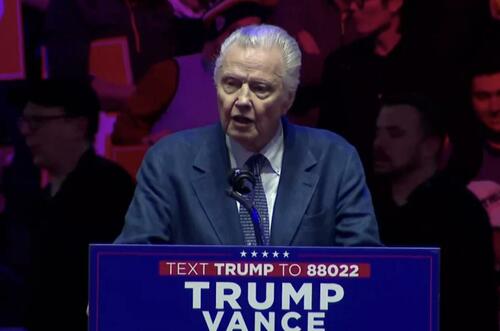



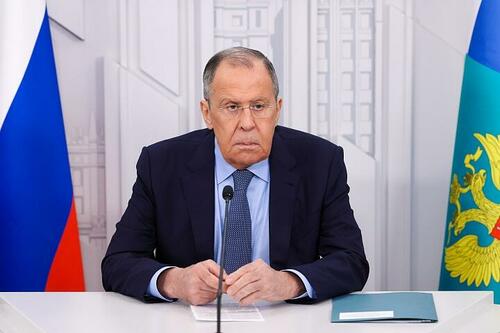 Image: Russian Ministry of Foreign Affairs
Image: Russian Ministry of Foreign Affairs
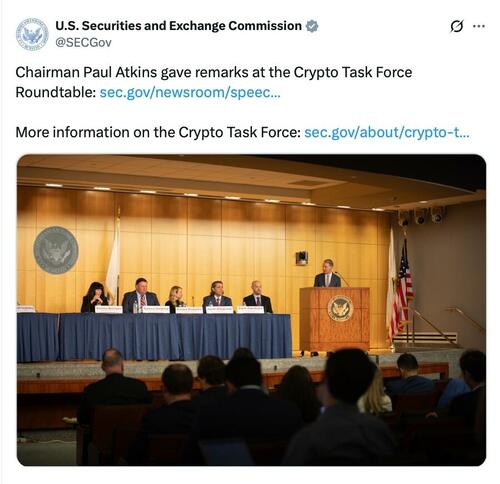
 Protest against the suspension of Indus Waters Treaty by India, in Karachi, Pakistan, via Reuters.
Protest against the suspension of Indus Waters Treaty by India, in Karachi, Pakistan, via Reuters.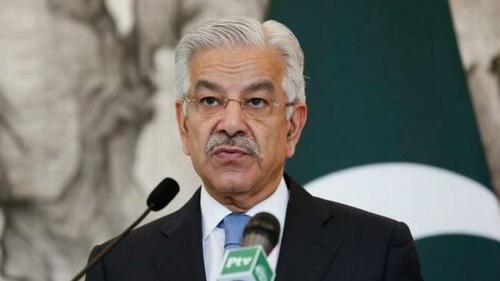 Khawaja Muhammad Asif, Pakistan’s defense minister
Khawaja Muhammad Asif, Pakistan’s defense minister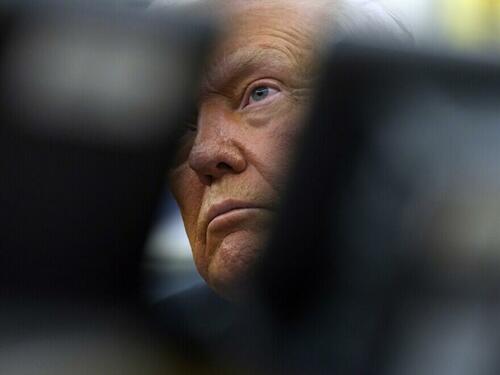
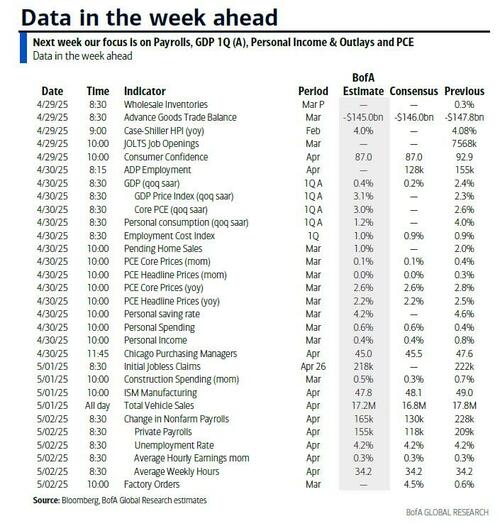
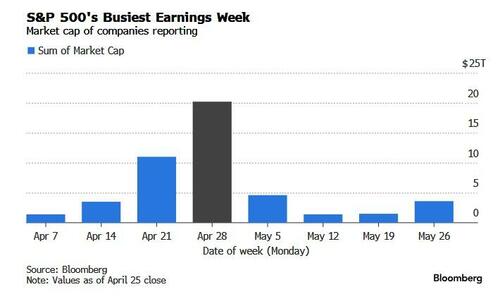



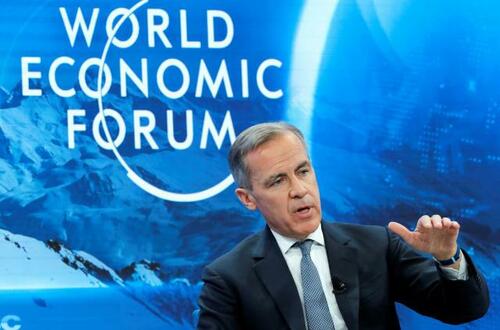

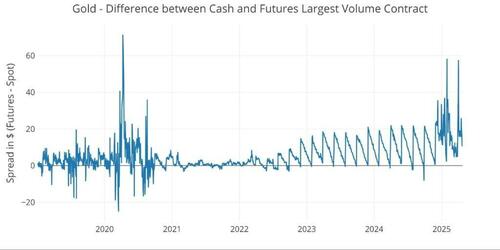
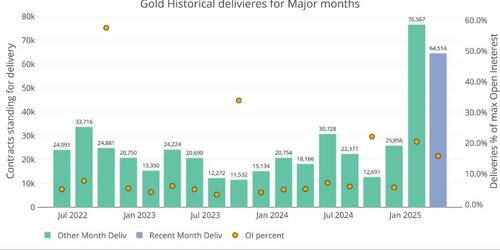
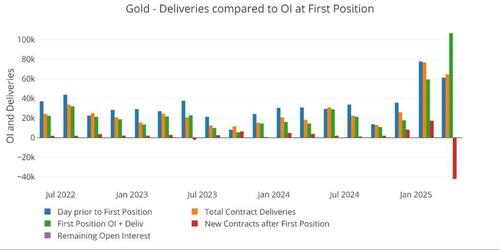
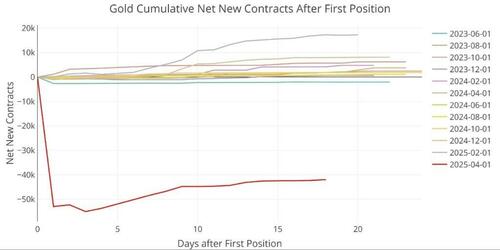
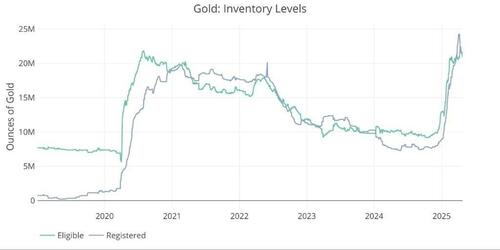
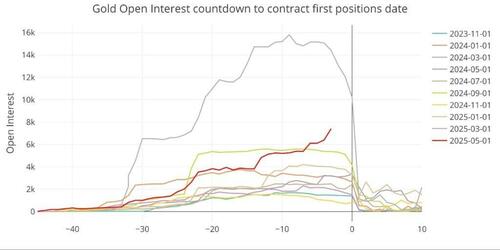
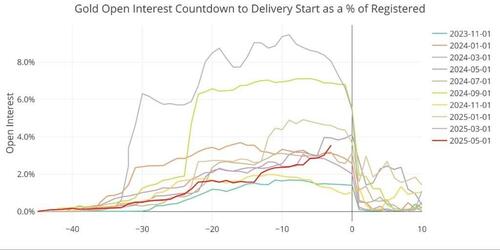
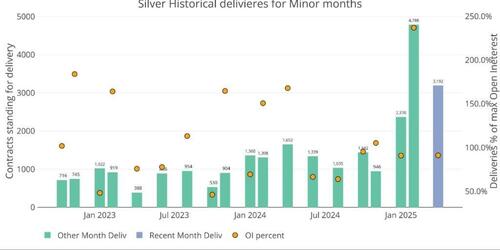
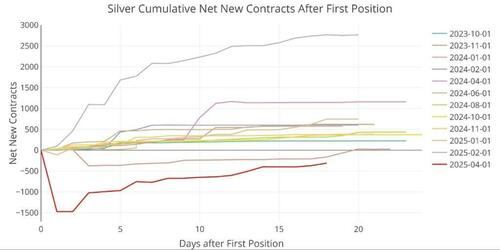
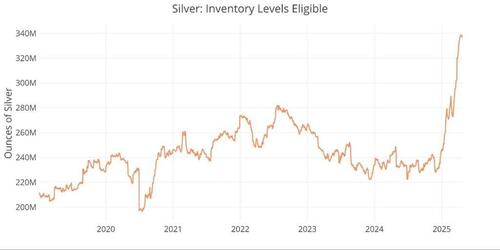
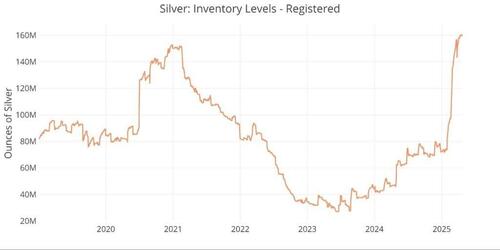
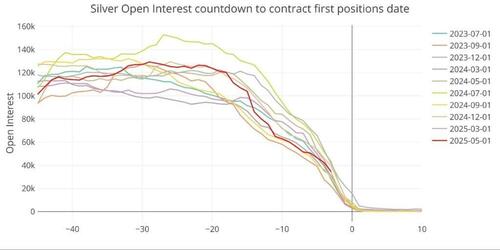
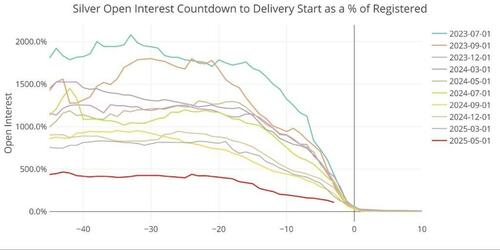
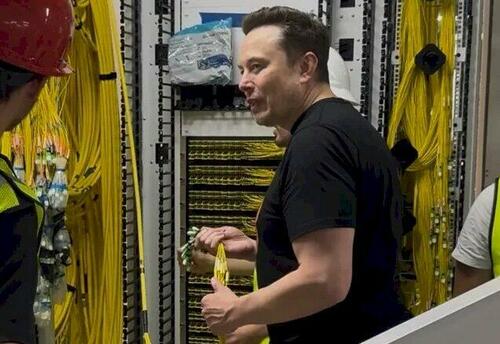
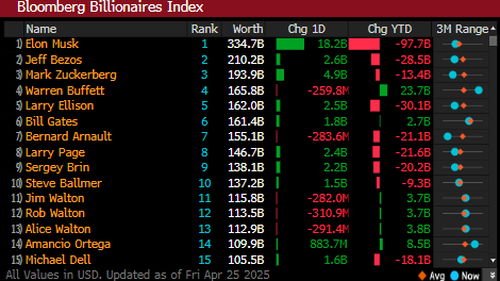
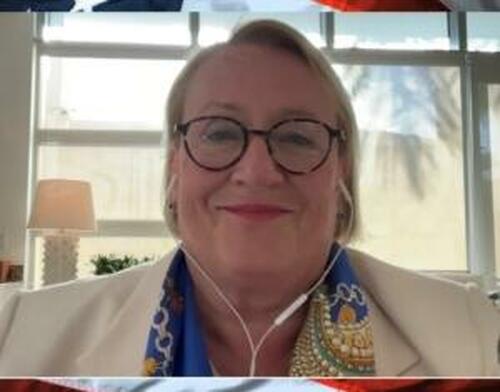

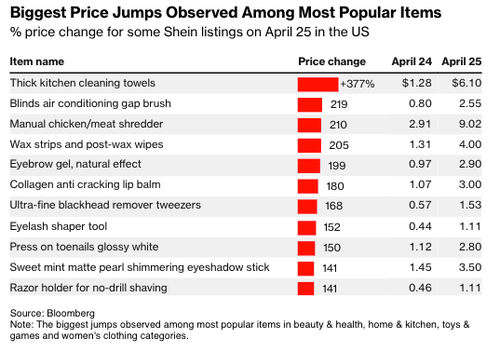
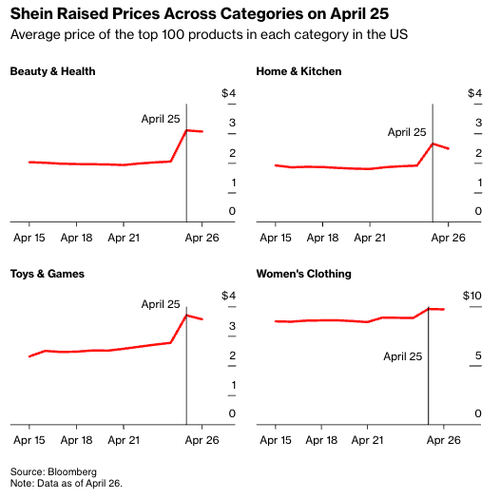
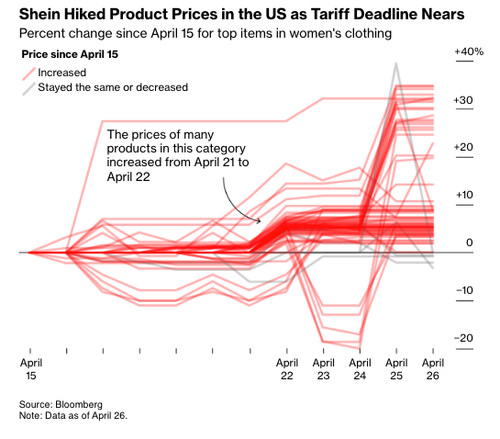

 Michael Gloss in Moscow’s Red Square before he reportedly joined the Russian army, via IStories
Michael Gloss in Moscow’s Red Square before he reportedly joined the Russian army, via IStories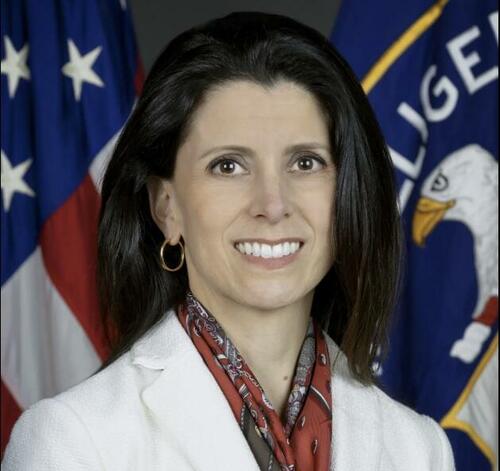 Via CIA/US gov website: Juliane Gallina Gloss was named the CIA’s deputy director for digital innovation in February 2024.
Via CIA/US gov website: Juliane Gallina Gloss was named the CIA’s deputy director for digital innovation in February 2024. IStories: Gloss put a photo taken at the regiment’s base on his avatar in his Odnoklassniki profile. Photo: Odnoklassniki
IStories: Gloss put a photo taken at the regiment’s base on his avatar in his Odnoklassniki profile. Photo: Odnoklassniki
 Image via Anadolu Agency
Image via Anadolu Agency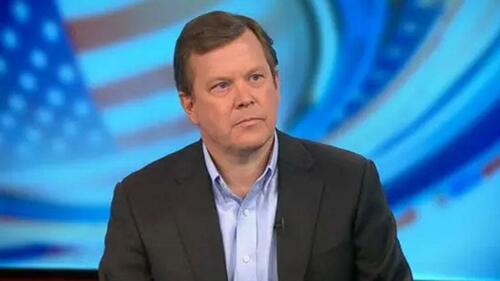
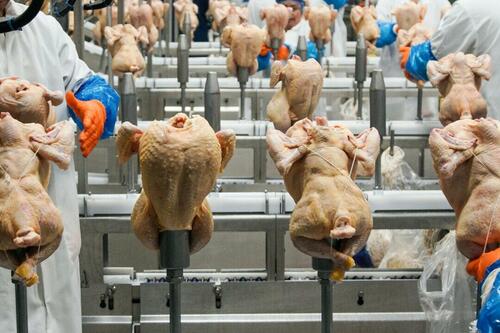 Workers process chickens at a poultry plant in Fremont, Neb., on Dec. 12, 2019. Nati Harnik/AP Photo
Workers process chickens at a poultry plant in Fremont, Neb., on Dec. 12, 2019. Nati Harnik/AP Photo
Recent comments